Different types of animals include invertebrates such as sponges, flatworms, roundworms, cnidarians (jellyfish, anemones, etc.), mollusks (squid, octopuses, snails, clams, etc.), crustaceans, arachnids and insects; and vertebrates such as fish, amphibians, reptiles, mammals and birds.
On this page is a list of the major animal types, with pictures and facts on each. You'll learn the differences between these animal groups, and improve your understanding of the entire animal kingdom!
Download the FREE accompanying question sheet to test your animal knowledge!
Use the links below to find the information you need (or continue reading for a complete overview of the animal kingdom).
Page Index
- FREE question sheet (no sign-up required)
- Different Types of Animals: Introduction
- Types of Invertebrate Animals
- Types of Vertebrate Animals
- Animalia: The Animal Kingdom
- The Two "Main" Types of Animals: Invertebrates and Vertebrates
- Basic Animal Classification
- Related Pages on Active Wild
Types Of Animals
- Invertebrates
- Sponges
- Flatworms
- Roundworms / Nematodes
- Cnidarians
- Mollusks
- Arthropods
- Insects
- Crustaceans
- Arachnids
- Vertebrates
- Fish
- Amphibians
- Reptiles
- Birds
- Mammals
Free Animals Question Sheet For Use With This Page

Click here or on the image above to view / download a free printable question sheet for use with this page. (PDF file, 1.2 Mb). If the question sheet opens in your browser rather than downloading, right-click on the question sheet and select 'download'.
Different Types Of Animals: Introduction
On this page is a list of the main types of animals. Instead of containing examples of individual species (e.g. tiger and blue whale), the list below features examples of the major groups of animals – groups such as mammals, insects, and reptiles.
The page is divided into two main sections: types of invertebrates and types of vertebrates. In each section, you'll meet examples of different types of animals within these larger groups.
If you want information on individual animal species, then check out this page: A To Z Animals With Pictures & Facts, where you'll find pictures and facts on hundreds of amazing animals.
At the bottom of the page you'll find important information on the animal kingdom and how scientists group animals into different types.
This page is an overview of the main types of animals; there are many other animal groups, both living and extinct!
Types of Animals: Invertebrates
Invertebrates are animals without a backbone. The very first animals were invertebrates, and in the hundreds of millions of years since their appearance, invertebrates have diversified into a multitude of different types.
Whereas vertebrates make up a single group of related animals (the subphylum Vertebrata), there are many different types of invertebrates; some of which are more closely-related to vertebrates than they are to other invertebrates!
Below is a selection of the major invertebrate groups. You can see more invertebrates on this page: Invertebrates Examples.
Sponges
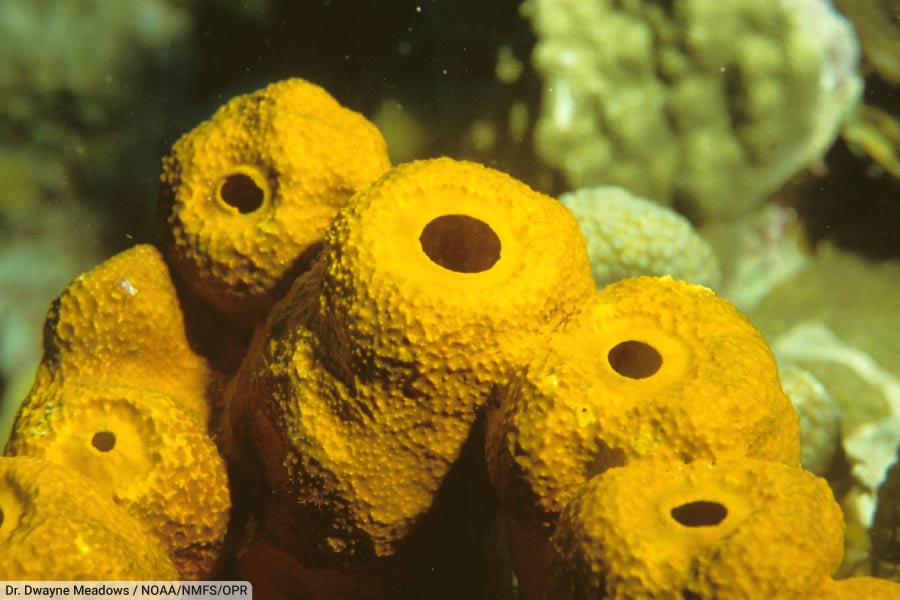
- Phylum: Porifera
Looking like bulbous, hollow plants, sponges are among the most basic of all animals. They lack a nervous system and a stomach, and most species are capable of movement only in their juvenile form.
There are between 6,000 and 9,000 known species of sponge. Together, they make up the phylum Porifera. (A phylum is a particular type of animal group; you can find out more about the different types of animal groups further down the page.)
Nearly all sponges are found in marine habitats, although there are a small number of freshwater sponges.
Sponges are filter feeders. Inside a sponge’s body are cells with whip-like projections called flagella. The movement of the flagella causes water to move through the sponge. The sponge feeds on microorganisms contained within the water.
One of the first scientists to realize that sponges were animals rather than plants was Aristotle.
Flatworms
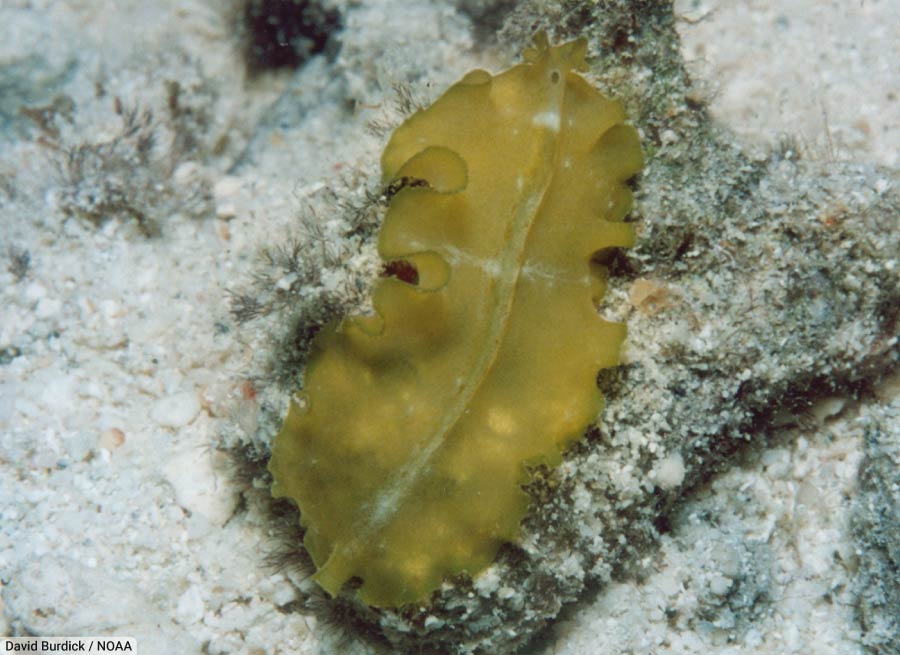
- Phylum: Platyhelminthes
Flatworms make up the the phylum Platyhelminthes. These invertebrate animals range in size from microscopic species to tapeworms that can be up to 25m (82 ft.) in length.
Flatworms lack a body cavity, and have neither a circulatory nor a respiratory system. They are the simplest animals to exhibit ‘bilateral symmetry’ (i.e. to have bodies that are symmetrical). Flatworms have existed for hundreds of millions of years and were the first carnivorous hunters.
Many living flatworms are parasitic. They make their way into a host organism and feed on its body from the inside. This can be harmful and even deadly to the host animal.
Often the eggs of parasitic flatworms are eaten by a small animal, in whose body the flatworm undergoes the first stage of its development. When the smaller host animal is eaten by a larger animal, the flatworm sets up a permanent home in its new host. It feeds off the host animal and also lays its eggs in the host’s body. These are passed by the host animal and the cycle begins again.
Some flatworms make their way through more than one host before embedding themselves in their final host.
Major types of flatworm:
- Class Turbellaria - free-moving, non-parasitic flatworms
- Class Cestoda - tapeworms and related species, all parasitic
- Clade Trematoda - flukes, all parasitic
- Class Monogenea - parasites that live infest the outside of a host species' body
Roundworms / Nematodes
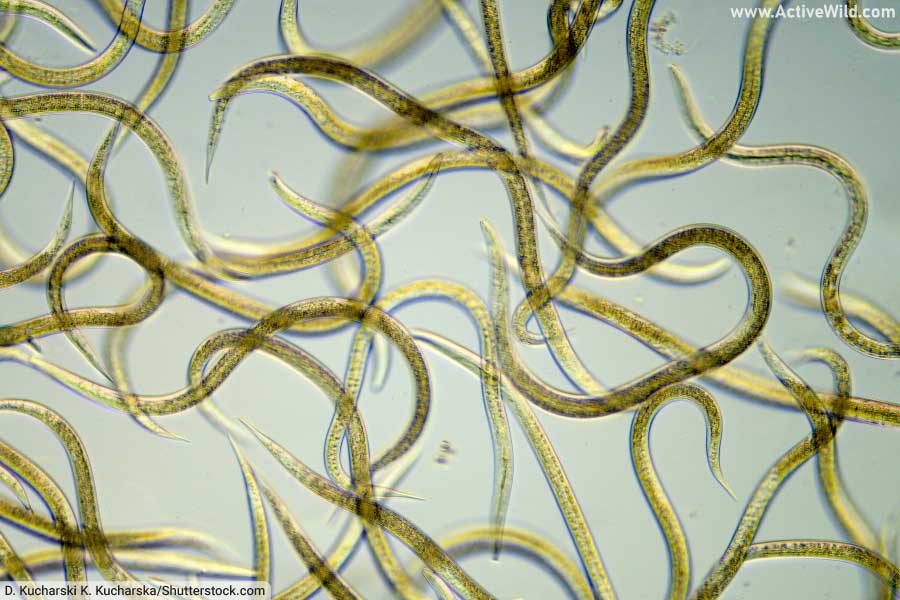
- Phylum: Nematoda
Roundworms, or nematodes, have long, cylindrical bodies. While most are microscopic, some can reach lengths of 13m (42.6ft.). Around 3,500 roundworm species are currently recognized, but some biologists believe that the actual number of species is closer to 40,000 or more.
One of the largest roundworms is Placentonema gigantissima. It is a parasite that lives in the placenta of a sperm whale.
Unlike flatworms, which use the same opening both to take in food and to expel waste, roundworms have a more developed digestive system with separate openings for each task.
There are very few ecosystems on Earth in which roundworms are not present. These adaptable animals are found in polar, mountainous, tundra and desert regions and well as underground and on the sea bed.
There are more individual roundworms than any other type of animal. It is estimated that there are 5 billion roundworms in every acre of fertile garden soil; 60 billion roundworms for each living person; and that roundworms account for 80% of all living animals.
Cnidarians
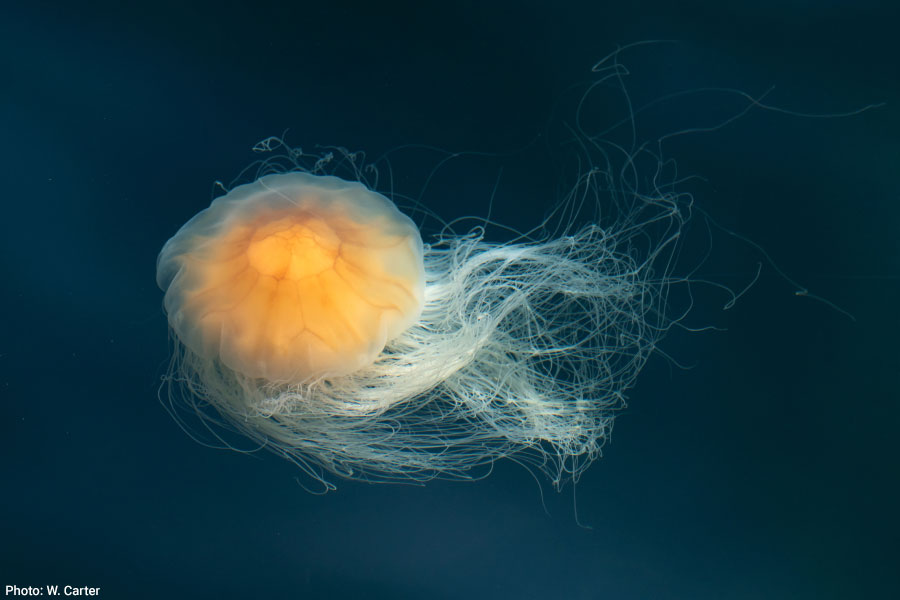
- Phylum: Cnidaria
The phylum Cnidaria includes animals such as corals, sea anemones and jellyfish. They have soft bodies with radial symmetry (i.e. they are symmetrical around a central point, with no ‘back’ or ‘front’ side).
Cnidarians such as corals and sea anemones permanently attach themselves to underwater surfaces after a short free-swimming larval stage. Others, such as jellyfish and the Portuguese man o' war, are free-swimming even in adulthood.
All cnidarians are carnivores. They are equipped with cells called cnidocytes, which deploy venom via a minute spear-like structure. Cnidocytes are adapted for capturing prey, and for defense against predators. It is these cells that are responsible for a jellyfish’s painful sting.
Major Types of Cnidarian
- Class Anthozoa (sea anemones and corals)
- Class Scyphozoa (jellyfish)
- Class Cubozoa (box jellyfish)
- Class Hydrozoa (a group of related animals that includes colonial species such as the Portuguese man o’ war)
Mollusks
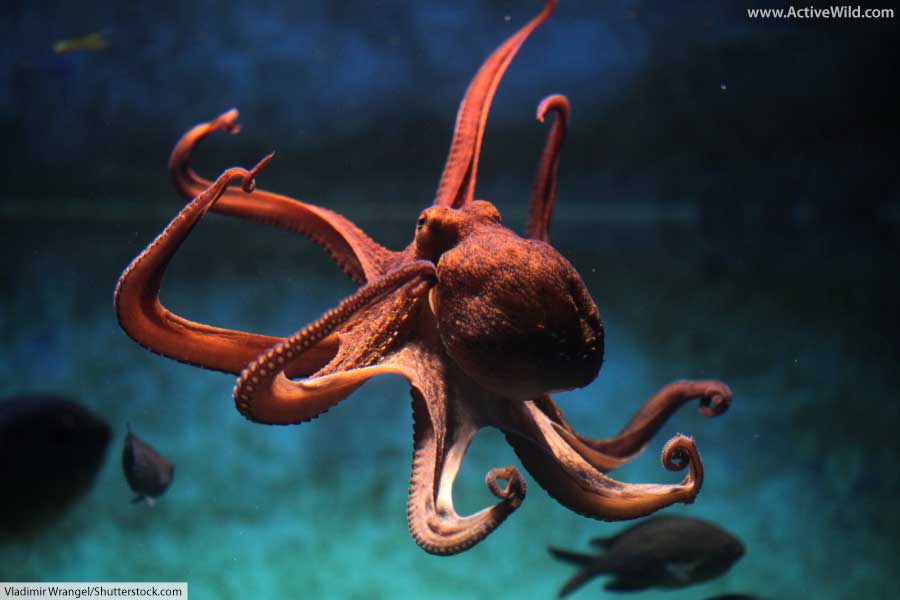
- Phylum: Mollusca
- You can see examples of mollusks on this page: Examples Of Mollusks
The phylum Mollusca, whose members are known as mollusks (spelt molluscs in British English), contains both the largest and the most intelligent invertebrates. This group contains animals as diverse as oysters and octopuses.
There are around 85,000 living species of mollusk. (source)
Bivalves such as oysters and clams, gastropods such as snails and slugs, and cephalopods such as octopuses, squid and cuttlefish are all mollusks.
All mollusks have a mantle, which is a thick muscular wall that contains respiratory and other organs. In cephalopods, the mantle also functions as a jet, which pushes the animal through the water.
The colossal squid is the largest living mollusk. It reaches an estimated length of around 14 m (46 ft.) and is found in the Southern Ocean.
Octopuses are the most intelligent invertebrates. They have been observed using tools, solving problems and even playing – a behavior associated with intelligence.
Notable Types Of Mollusk
- Class Bivalvia - bivalves (oysters, clams, cockles, mussels and related species)
- Class Gastropoda - gastropods (slugs and snails)
- Class Cephalopoda – cephalopods (squid, cuttlefish, octopuses)
Arthropods
- Phylum: Arthropoda
- You can see examples of arthropods on this page: Examples Of Arthropods
Arthropods are a huge and diverse group of animals. There are over a million known species in the phylum Arthropoda, which contains all insects, crustaceans, arachnids, horseshoe crabs and myriapods (centipedes & millipedes) as well as several other invertebrate groups.
The name ‘arthropod’ means ‘jointed foot’. All arthropods have segmented bodies, paired jointed appendages (i.e. legs, antennae, etc.) and hard exoskeletons.
Below we look in more detail at some notable arthropod groups.
Insects

- Class: Insecta
- You can find out more about insects on this page: Insects - The Ultimate Guide
Insects are thought to have appeared during the Silurian Period, between 443.8–419.2 million years ago. (That’s over 200 million years before dinosaurs!)
The first known insect is Rhyniognatha hirsti, which resembled a modern-day silverfish and walked the Earth 396 million years ago.
Today insects are by far the largest single group of animals in terms of number of species. Over 1 million insect species have been described (i.e. named and scientifically accepted as being an individual species).
There are more than 3 times known insect species than there are known plant species. Insects make up more than half of all known organisms.
In short, there are a lot of different types of insects!
Characteristics of all insects include: a hard exoskeleton, a body comprising three parts: head, thorax and abdomen, three pairs of jointed legs, a single pair of antennae and a pair of compound eyes.
The largest group (in terms of number of species) within Insecta is Coleoptera – the beetles. There are over 320,000 recognized species of beetle.
The world’s largest insect is the larval stage of the Goliath beetle Goliathus goliatus. The giant weta Deinacrida heteracantha – a giant, flightless cricket found in New Zealand – vies with the elephant beetles and Goliath beetles for the title of heaviest adult insect.
The world’s smallest insect is the parasitic wasp Dicopomorpha echmepterygis, which is found in the United States.
Notable Types Of Insect
- Order Coleoptera – beetles
- Order Diptera – flies
- Order Hymenoptera – wasps, bees and ants
- Order Mantodea – mantises
- Order Lepidoptera – butterflies and moths
- Order Blattodea – cockroaches and termites
- Order Odonata – dragonflies
Crustaceans
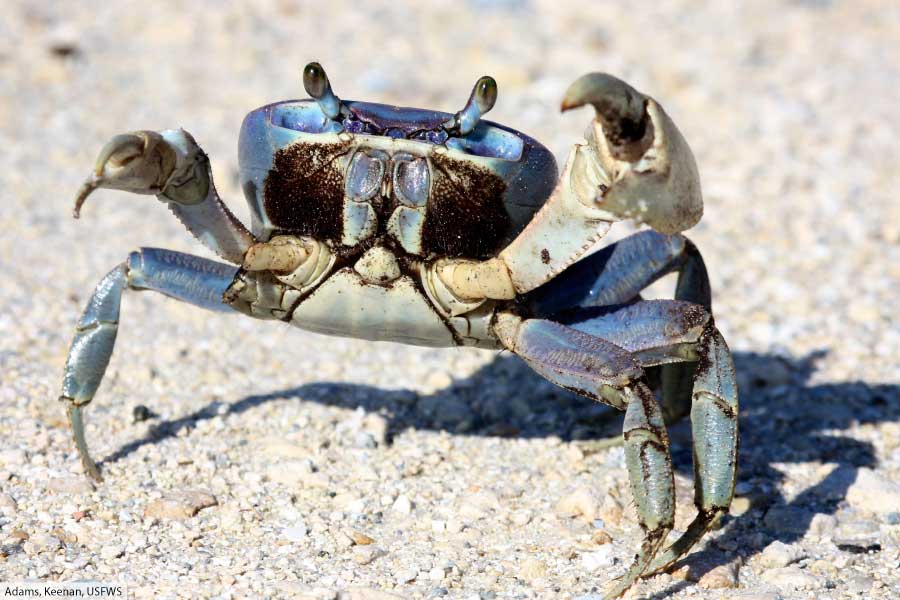
- Subphylum: Crustacea
- You can find out more about crustaceans on this page: Crustaceans: The Ultimate Guide
With around 67,000 species, Crustacea is one of the largest arthropod groups. Crustaceans are extremely varied; the group includes crabs, lobsters, shrimps, krill, woodlice and barnacles. Most crustaceans live in water, but some – including woodlice – are found on land.
Typical crustacean characteristics include a segmented body with a hard exoskeleton, two pairs of antennae and a pair of compound eyes, which are often mounted on stalks.
A characteristic of crustaceans not seen in other arthropods is the presence of ‘biramous limbs’. These are limbs that branch into two. A crustacean’s second pair of antennae may also be biramous.
The world’s smallest crustacean is the tiny marine parasite Tantulacus dieteri, which has a body length of 85 micrometers (0.0033 in). This miniature crustacean, which infests other small marine crustaceans, may be the world’s smallest arthropod. (Some mites of class Arachnida are equally as tiny.)
The largest crustacean is the Japanese spider crab, which has a maximum claw to claw length of 5.5 meters (18 ft.).
The heaviest crustacean is the American lobster, Homarus americanus. With a mass of over 20 kg (44 lb.), it is also the world’s heaviest arthropod.
Notable Types Of Crustacean
- Order Euphausiacea – krill
- Infraorder Brachyura – crabs
- Suborder Oniscidea – woodlice
- Infraorder Astacidea – lobsters, crayfish and related animals
- Infraclass Cirripedia – barnacles
Arachnids
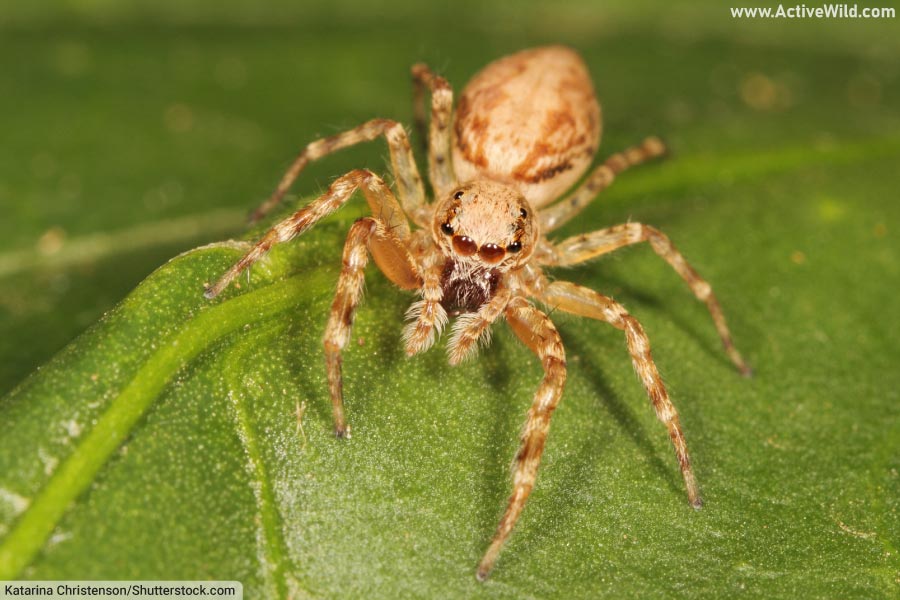
- Class: Arachnida
- You can find out more about arachnids on this page: Arachnids: The Ultimate Guide
The best-known arachnids are spiders, but this arthropod group also includes scorpions, camel spiders, mites, ticks and other types of animals.
Arachnids have four pairs of legs, and a further two pairs of appendages positioned near the mouth.
These additional appendages have a number of different uses depending on the species. The pair closest to the mouth are known as chelicerae. These are the arachnid’s ‘jaws’. A spider’s chelicerae are hollow and are used to inject venom.
The second pair of appendages are known as ‘pedipalps’. A spider’s pedipalps are antennae-like sense organs, and also play a part in reproduction. A scorpion’s pedipalps have adapted into pincers for manipulating prey.
Spiders are the largest arachnid group, with around 48,000 recognized species.
Notable Types Of Arachnid
- Subclass Acari - mites and ticks
- Order Opiliones - harvestmen / daddy longlegs
- Order Solifugae - camel spiders / wind scorpions / solifuges
- Order Araneae - spiders
- Order Scorpiones - scorpions
Types of Animals: Vertebrates
- Subphylum: Vertebrata
A vertebrate is an animal with a backbone.
Human beings are vertebrates; if you rub your back you'll probably be able to feel your backbone. Having a backbone is something we share not only with our closest relatives in the animal kingdom (the apes) but with every bird, reptile, mammal, amphibian and fish.
Unlike invertebrates, vertebrates are part of a recognized biological group: the subphylum Vertebrata. (A subphylum is a subgroup of a phylum; Vertebrata is part of the phylum Chordata.)
Vertebrates have their own group because every animal with a backbone shares the same ancestor. Fish were the first animals to develop backbones, so in the family tree of every living vertebrate (including humans) is a fish!
Fish

- Superclass: Osteichthyes (bony fish)
- Class: Chondrichthyes (cartilaginous fish)
- You can find out more about fish on this page: Fish - The Ultimate Guide
- You can see examples of different types of fish on this page: Types of Fish
- Discover more about sharks on this page: Shark Facts
- Discover different types of sharks on this page: Types of Sharks

The first fish appeared in the Cambrian Period, around 500 million years ago. They were the first vertebrates, and the ancestors of all other vertebrates. Somewhere way back in your own family tree is a fish!
Note: in biology, the word ‘fish’ applies to a single fish, or a group of the same species of fish. The word ‘fishes’ is used for a group of fish that contains multiple species.
Today there are two main fish groups: the bony fishes (Osteichthyes) and the cartilaginous fishes (Chondrichthyes).
There are also two other, smaller, fish groups: the hagfish (class Myxini) and the lampreys (order Petromyzontiformes). These last two groups form a subgroup of Vertebrata known as the ‘jawless fishes’.
Bony fish, as the name suggests, have skeletons made of bone. There are two main types of bony fish: the Actinopterygii, or ray-finned fishes, and the Sarcopterygii, or lobe-finned fishes.
The ray-finned fishes, with over 32,000 known species, account for the vast majority of living fish. Their fins are thin and supported by spiny bones. Most ray-finned fish have swim-bladders. These gas-filled sacs regulate buoyancy.
The fins of lobe-finned fish are fleshy, and extend from the body on short stalks. Lobe-finned fish are the ancestors of all non-fish vertebrates, including mammals.
Very few living species of lobe-finned fish remain. Those that do include the coelacanths and the lungfish.
Cartilaginous fish include the sharks, rays, skates and sawfish. Their skeletons are made not of bone, but of a natural substance called cartilage. The whale shark is not only the world’s largest shark, but also the world’s largest fish.
Notable Fish Groups
- Class Actinopterygii – ray-finned fishes
- Class Sarcopterygii – lobe-finned fishes
- Subclass Elasmobranchii – (sharks, rays, skates, sawfish)
Amphibians
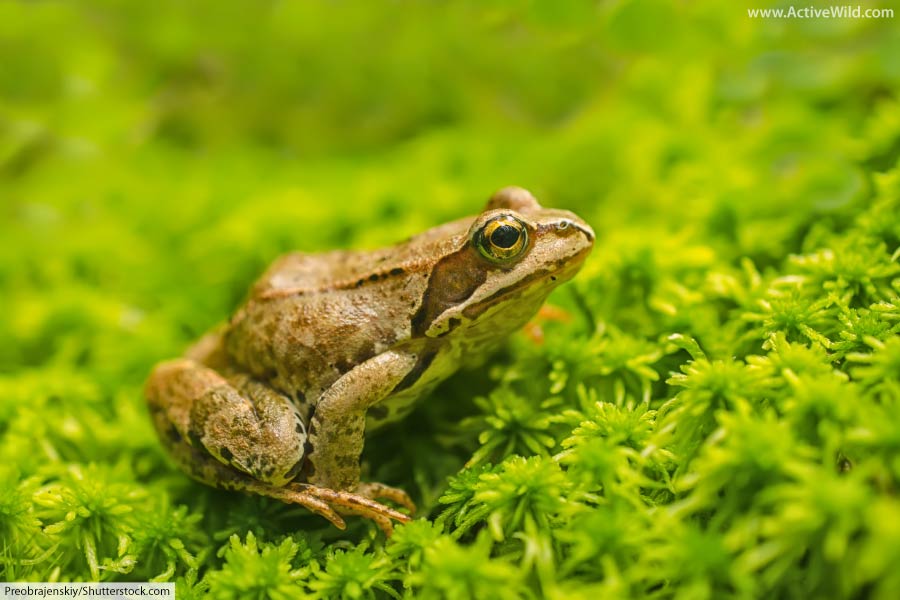
- Class: Amphibia
- You can find out more about amphibians on this page: Amphibians: The Ultimate Guide
- You can see examples of different amphibians on this page: Types of Amphibians
Amphibians evolved from four-footed animals known as tetrapods, which themselves had evolved from lobe-finned fishes. (Another branch of tetrapods, Amniota, are the ancestors of all living reptiles, birds and mammals.)
The early amphibians were the dominant animals on land. Large crocodile-like amphibians preyed on fish and other aquatic animals.
This changed when the amniotes evolved the ability to lay eggs on land. Once freed from their reliance on water for reproduction, early reptiles and the ancestors of mammals became the dominant land animals.
Today there are three main types of amphibians: the Anura (frogs and toads), Urodela (salamanders), and Apoda (caecilians).
Characteristics of amphibians include: eggs laid in water, an aquatic larval stage, moist skin capable of gas exchange, a terrestrial (land-dwelling) adult stage. (Some amphibians have evolved means of avoiding the larval stage and give birth to live young. Others retain their gills and remain aquatic even in adulthood.)
Major Types Of Amphibian
- Order Anura (frogs and toads)
- Order Urodela (salamanders)
- Order Apoda (caecilians)
Reptiles
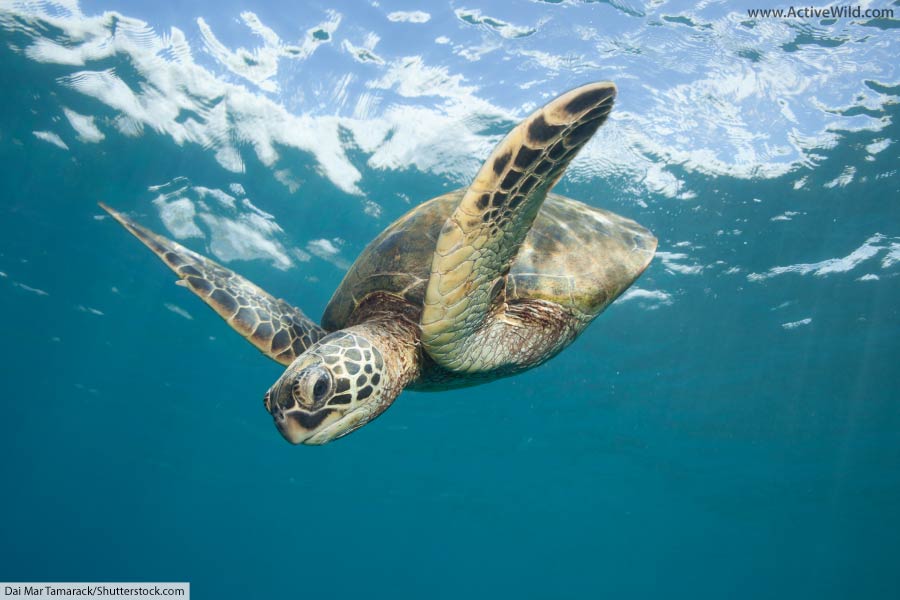
- Class: Reptilia
- You can find out more about reptiles on this page: Reptiles: The Ultimate Guide
- Discover different types of reptiles on this page: Types of Reptiles
Reptiles are cold-blooded animals that descended from a group of animals called tetrapods, which themselves had evolved from lobe-finned fish. Most reptiles lay eggs, but some give birth to live young.
During the Mesozoic Era reptiles became the dominant land animals, but their reign was ended by the meteor strike which caused the Cretaceous-Paleogene Extinction Event.
Living reptile groups include: Testudines (turtles and tortoises); Rhynchocephalia (the tuatara); Squamata (lizards and snakes); and Crocodilia (crocodiles, gavials, caimans, and alligators).
The world’s largest reptile is the saltwater crocodile (Crocodylus porosus). Reaching lengths of up to 6 m (20 ft.), this fearsome species is found in Australia and Southeast Asia.
There are just over 10,000 known reptile species. By far the largest group of reptiles (in terms of number of the number of species it contains) is Squamata.
Some scientists consider birds to be reptiles as they are the direct descendants of the dinosaurs. The inclusion of birds into Reptilia would roughly double the number of known reptiles.
Major Types Of Reptile
- Order Testudines (turtles and tortoises)
- Order Rhynchocephalia (the tuatara)
- Order Squamata (lizards and snakes)
- Order Crocodilia (crocodiles, gavials, caimans, and alligators)
Birds
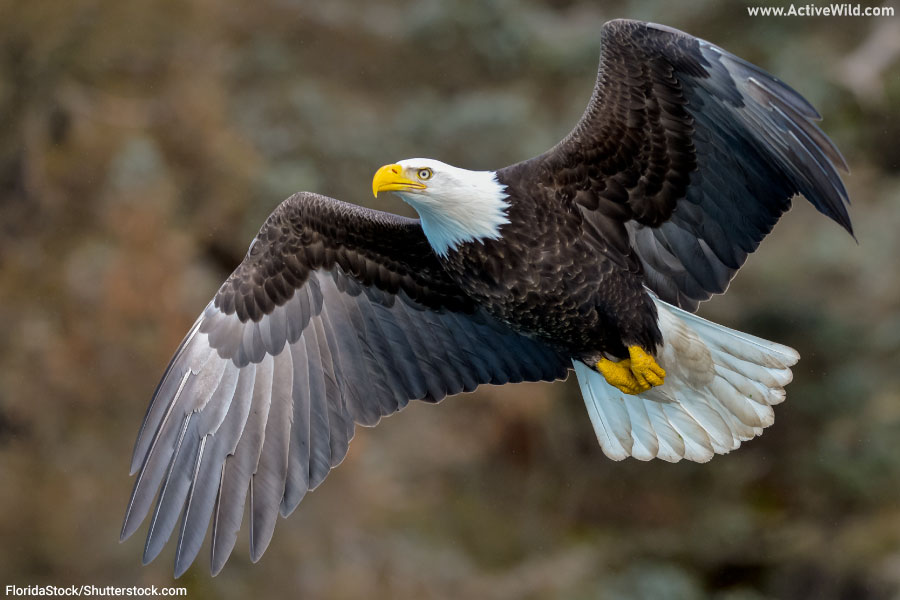
- Class: Aves
- You can find out more about birds on this page: Birds: The Ultimate Guide
- See examples of different types of birds on this page: Types of Birds
Not all dinosaurs became extinct in the Cretaceous-Paleogene Extinction Event. Birds are directly descended from dinosaurs, and for this reason many scientists consider birds to be dinosaurs.
Today, there are around 10,000 known bird species. They range in size from the tiny bee hummingbird to the common ostrich.
The vast majority of living birds belong to the infraclass Neognathae. Only 60 species belong to the other main bird group, Palaeognathae. These include the tinamous of the Americas and the flightless kiwis, cassowaries, emu, rheas and ostriches.
Characteristics of modern birds include having feathers, toothless bills, forelimbs modified into wings, and laying eggs.
The first true birds appeared during the Cretaceous Period. During this time they would have shared the sky with the first flying vertebrates – the Pterosaurs.
Notable Types Of Bird
- Order Accipitriformes - birds of prey: hawks, eagles kites
- Order Anseriformes - waterfowl: ducks, geese, swans & related species
- Order Charadriiformes - gulls, auks & waders
- Order Galliformes - gamefowl: turkeys, chickens, partridges, pheasants & related species
- Order Passeriformes - perching birds / songbirds
- Order Piciformes - woodpeckers
- Order Psittaciformes - parrots
- Order Strigiformes - owls
Mammals
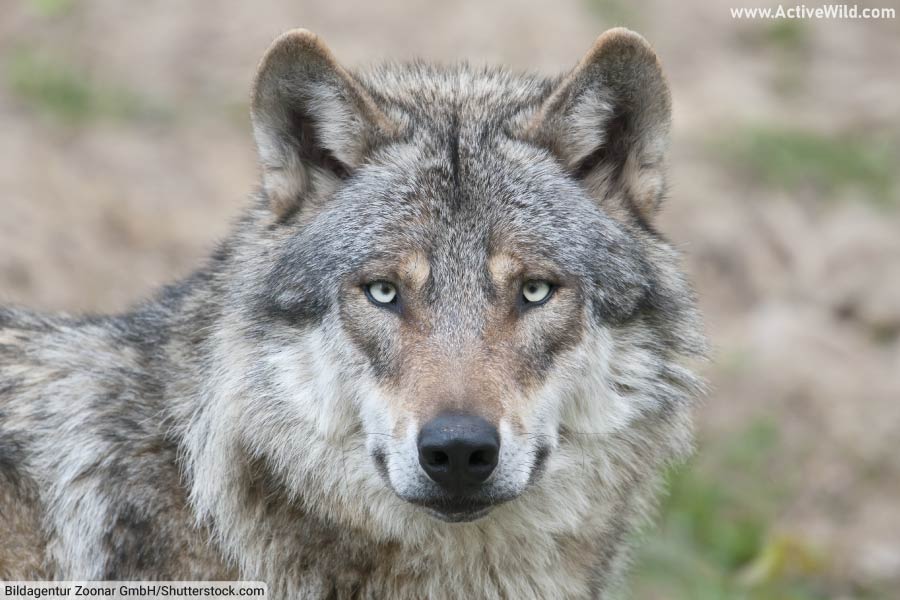
- Class: Mammalia
- You can find out more about mammals on this page: Mammals: The Ultimate Guide
- Discover different types of mammals on this page: Types of Mammals
- Find out more about rodents on this page: Rodents
- Find out more about bats on this page: Bats
- Find out more about primates on this page: Primates
- Discover different types of marsupials on this page: Types of Marsupials
The first true mammals first appeared during the Late Triassic, around 200 to 227 million years ago. While sharing Earth with the dinosaurs, the early mammals were by necessity small and nocturnal.
The Cretaceous-Paleogene Extinction Event spelt the end of the dinosaurs’ reign. With the dinosaurs gone, mammals quickly became the dominant land animals. They evolved to fill many different niches, even returning to the sea in the shape of whales and dolphins.

Characteristics of mammals include: having hair, giving birth to live young (only five species of mammal, the monotremes, lay eggs), being warm-blooded, breathing air with lungs, and having mammary glands.
There are three main types of mammal: monotremes (Monotremata), marsupials (Marsupialia), and placental mammals (Placentalia).
The monotremes, which consist of four species of echidna and the platypus, are the only living egg-laying mammals.
Marsupials are also known as ‘pouched mammals’. Their young are born in a relatively undeveloped state. They undergo further development in a special pouch in the mother’s body, where they have access to milk.
Placental mammals give birth to young at a later stage of development than marsupials. While in the womb a developing placental mammal is supplied with nutrients via an organ known as a placenta. The placenta also handles gas-exchange and removes waste products.
Major Mammal Groups
- Order Artiodactyla – even-toed ungulates: cattle, pigs, sheep, deer, antelopes, giraffes, camels, hippopotamuses and related species
- Infraorder Cetacea (part of Artiodactyla): whales, porpoises, dolphins
- Order Carnivora: dogs, cats, seals, weasels, bears & related species
- Order Chiroptera: bats
- Order Diprotodontia: kangaroos, possums, wombats & related species
- Order Lagomorpha: rabbits, hares & related species
- Order Monotremata: echidnas, platypus
- Order Perissodactyla – odd-toed ungulates: horses, rhinoceroses, tapirs
- Order Primates: lemurs, galagoes, monkeys, apes & related species
- Order Rodentia: rodents
Animalia: The Animal Kingdom

An organism is a living thing. If we think of every single organism on Earth being part of one big group, then that group can be split into smaller groups of organisms that are more like each other than they are to other organisms.
Animalia – the animal kingdom – is one of several such groups of living things.
Animals have a particular set of characteristics that separates them from other groups of organisms such as plants, fungi and bacteria.
Animals belong to the animal kingdom, Animalia. Other kingdoms include Plantae - the plant kingdom, and Fungi, the fungus kingdom.
Characteristics of Animals
Characteristics of animals include: being multicellular (i.e. an animal's body consists of more than one cell); being able to move (even animals such as sponges can move for part of their lives); breathing oxygen; and being unable to produce their own food (unlike plants, animals can’t create food from sunlight). Most animals reproduce sexually.
Different Types Of Animals
On this page we've looked at some of the major types of animals and their characteristics. Below is information on what these groups actually are, and how animals are separated into different types.
The Two ‘Main’ Types of Animals: Invertebrates and Vertebrates
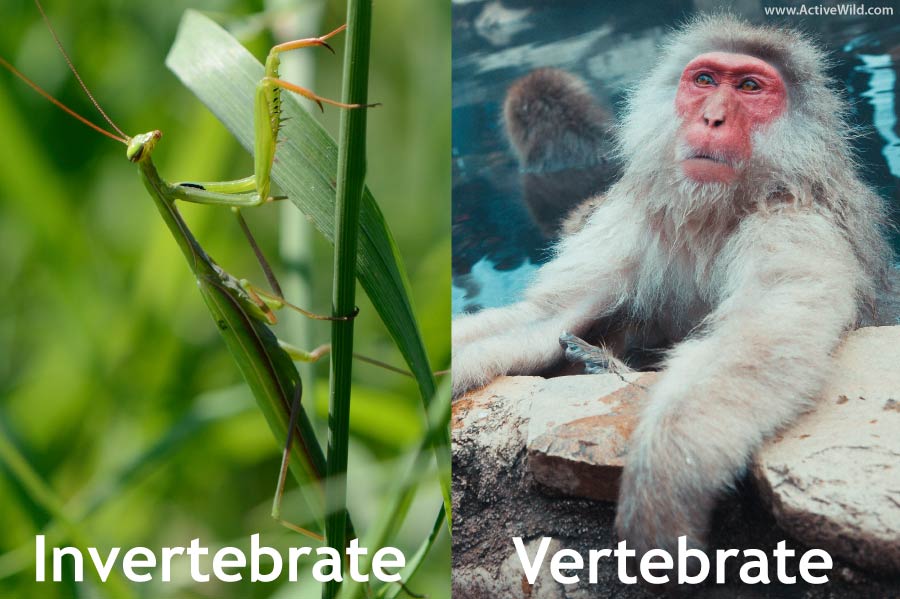
There are two main types of animal: invertebrates and vertebrates. Invertebrates are animals that don’t have a backbone; vertebrates are animals that do.
Of the 1.4 million or so known animal species, around 95% (or more) are invertebrates. Of these, almost 1 million are insects.
Only around 5% of known animals are chordates (chordates are animals that either have a backbone, or a similar structure known as a notochord).
Unlike vertebrates, invertebrates don’t actually form a single group of related animals. In fact, some invertebrates are more closely related to vertebrates than they are to other invertebrates.
Although "invertebrates" isn’t an "official" animal group, it does form a useful distinction between two very different types of animals. Because of this, we’ve separated the animal groups on this page into invertebrates and vertebrates.
Animal Classification Basics
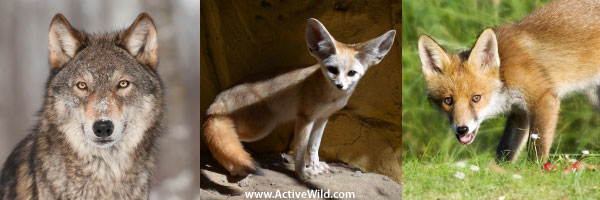
A ‘kingdom’ such as the animal kingdom or the plant kingdom consists of groups of organisms that share certain characteristics.
A kingdom can itself be divided into smaller groups of organisms that are more closely-related to each other than they are to other organisms.
Each of these smaller groups can then be further divided into even smaller groups of organisms that are even more closely-related. This continues until we get right down to individual species.
In fact, even an individual species can get divided into smaller groups, called subspecies. The domestic dog, for example, is a subspecies of grey wolf.
The science of placing species into groups is known as taxonomy. Each taxonomic stage, or ‘rank’ has its own name.
From kingdom to species, the basic taxonomic ranks are:
- Kingdom
- Phylum
- Class
- Order
- Family
- Species
- You can find out more about animal classification on this page: Animal Classification
Types of Animals: Conclusion
We hope that you’ve enjoyed this overview of the many different types of animals. If you have any questions, then feel free to ask them in the comments section below.
Discover More With Active Wild
Continue your exploration of Animalia by visiting the pages below:
- Animals: The Ultimate Guide To The Animal Kingdom
- A to Z Animals With Pictures & Facts
- Discover animals from all around the world: Animals Around The World
- Discover different animal habitats: Animal Habitats

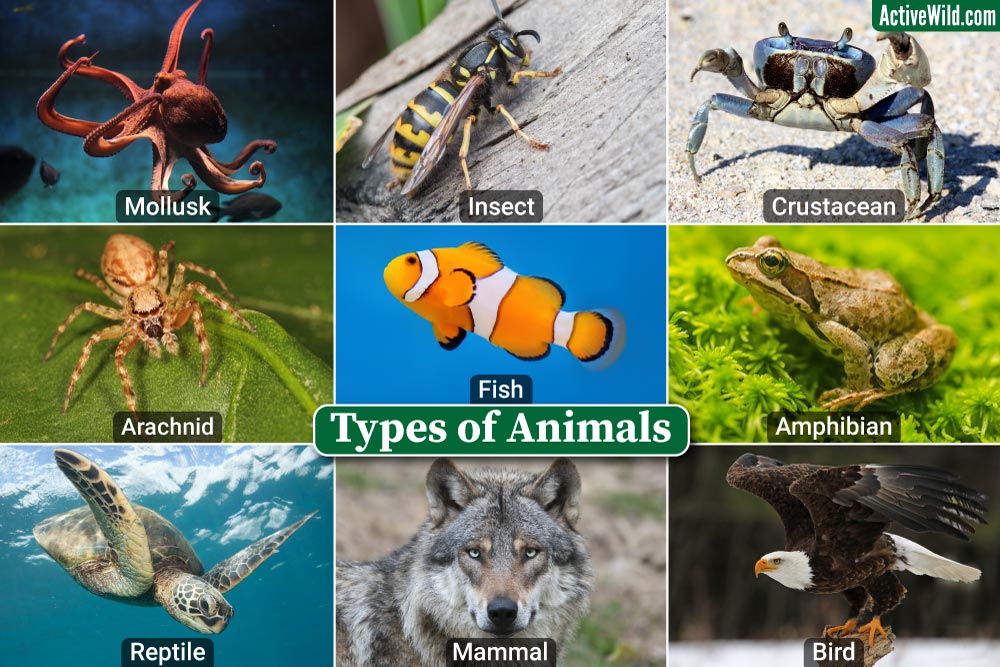

Thank you
I greatly appreciate it
this
gave me sooo much informashion thank you so much!!!😊😊😊😊
Great! Glad you found the site helpful! 🙂
Thank you so much now I can complete my project because of u 😊🥰
Thank you I Love it